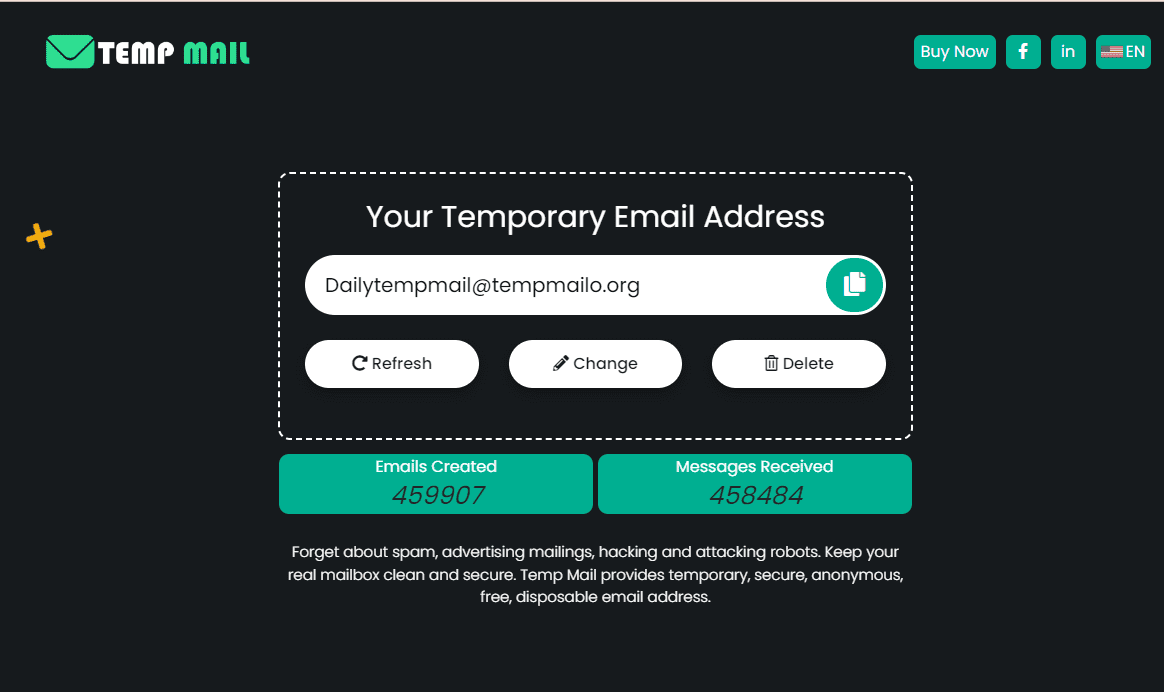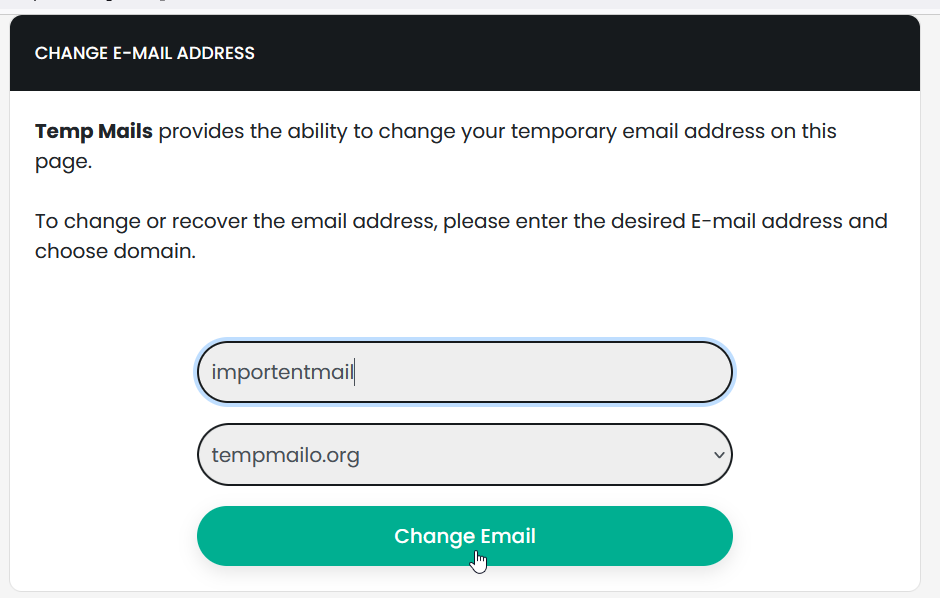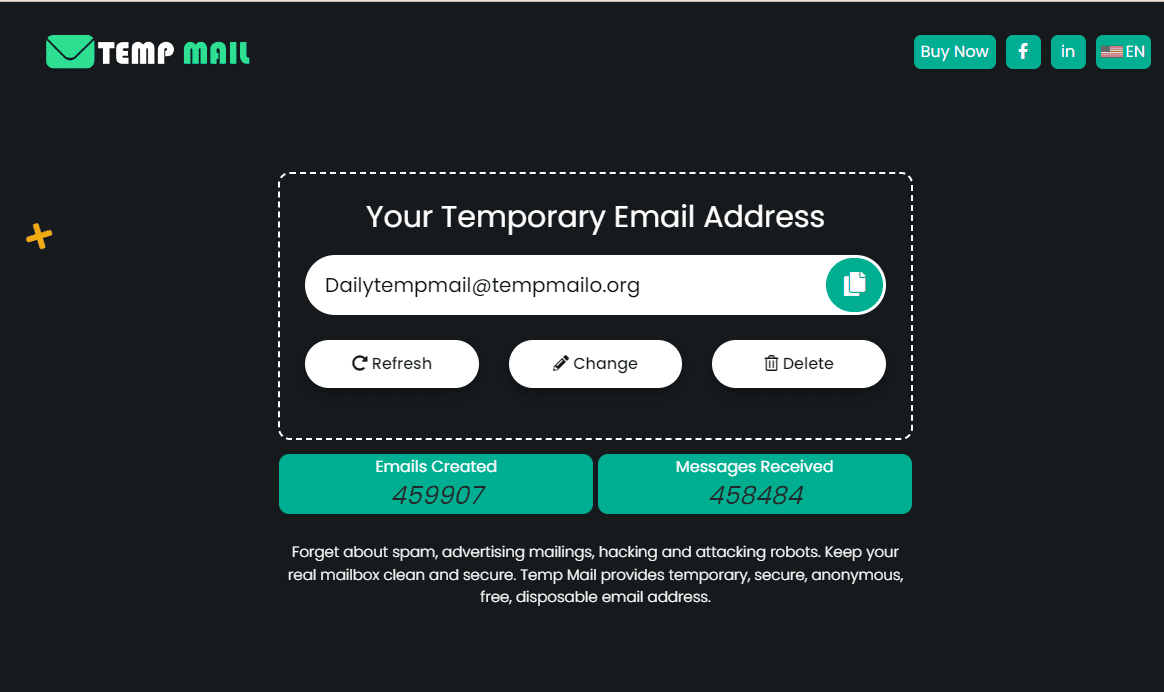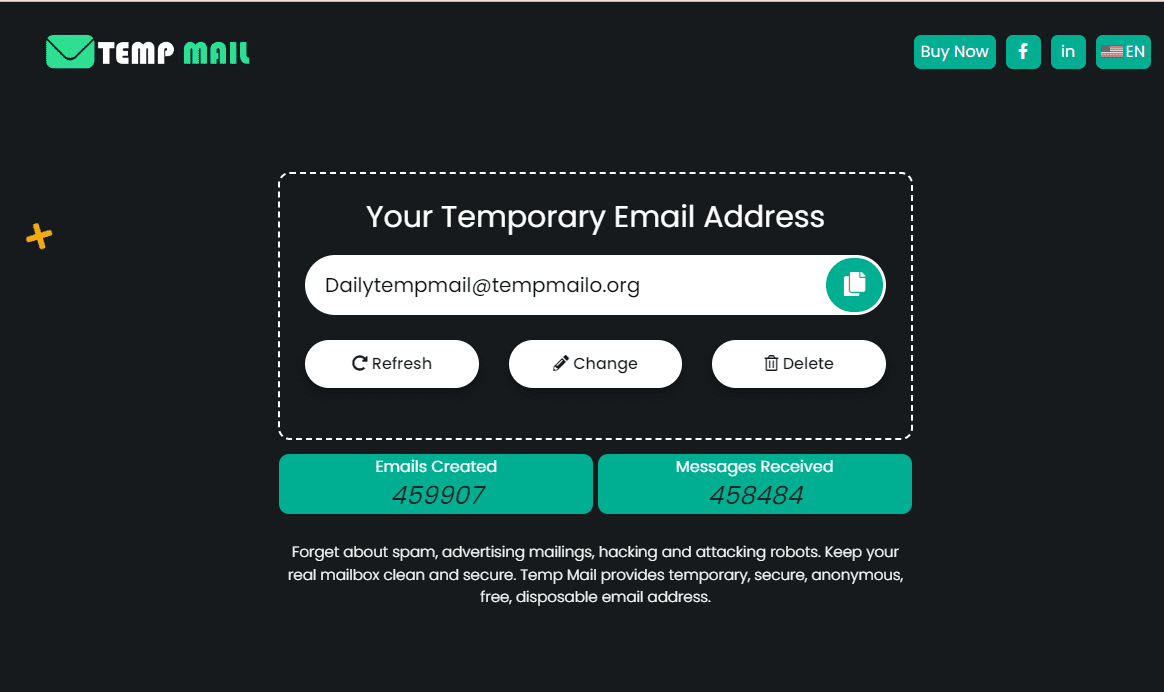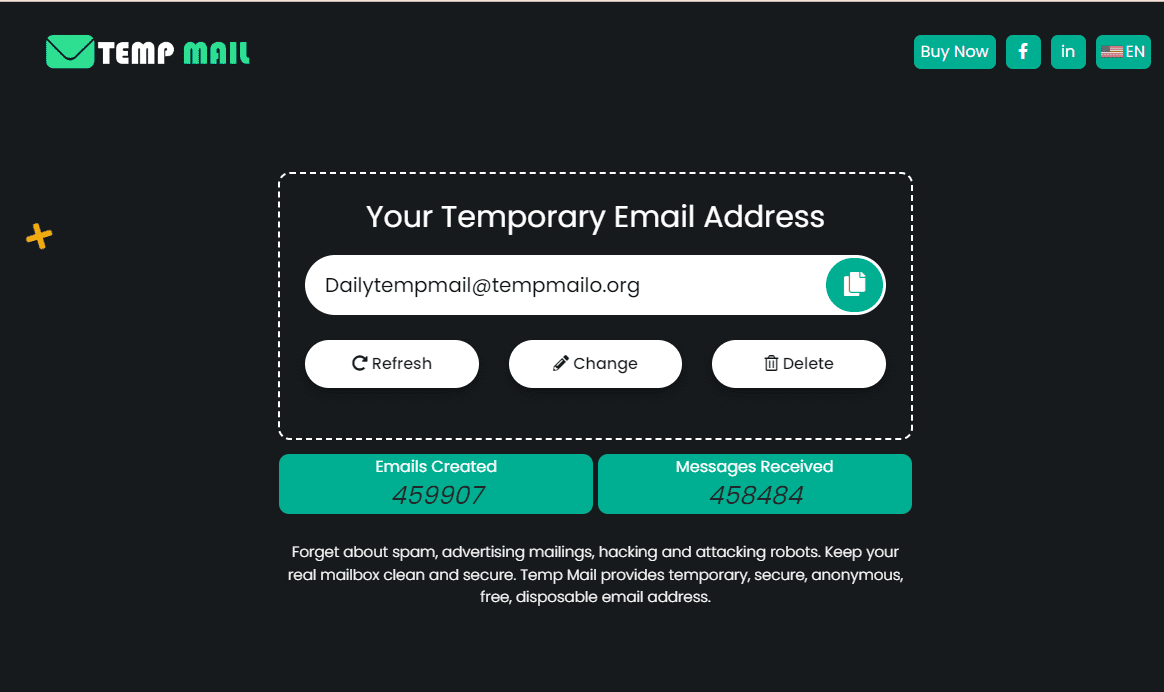Fake mail, also known as disposable or temporary email, is a service that provides users with a short-term email address. This address can be used to receive emails without revealing your personal or primary email account.
In today's digital world, where privacy is often at risk, understanding fake mail is crucial. It offers a simple solution for avoiding spam, protecting personal information, and maintaining online privacy. People commonly use fake mail for signing up on websites, testing apps, or keeping their inboxes clutter-free.
However, it’s important to use these services cautiously, as they may have limitations like a short lifespan or security risks. Knowing when and how to use fake mail can help you navigate the internet safely.
What is Fake Mail?
Fake mail, also known as disposable or temporary email, is a service that provides users with an email address designed for short-term use.
Unlike regular email accounts, fake mail addresses are usually created without the need for personal information and can be discarded after a certain period.
These temporary addresses are often used to receive emails for a limited time, such as when signing up for online services, testing websites, or avoiding spam in your primary inbox.
Once the purpose is fulfilled, the email address and its messages are typically deleted automatically. Fake mail offers a convenient way to protect your privacy and avoid the hassle of unwanted emails, but it’s important to use these services wisely.
How Does Fake Mail Work?
Fake mail, also known as disposable or temporary email, operates as a simple and effective tool for managing your online interactions without compromising your primary email address. Here’s a breakdown of how it works:
1. Creating a Fake Mail Address
When you visit a fake mail service website, the process begins by either generating a random email address or allowing you to create one manually. Most services provide an instant, ready-to-use email address without requiring any personal information. The simplicity of this setup makes it convenient for users who need quick access to a temporary inbox.
2. Receiving Emails
Once your fake mail address is active, you can use it to sign up for websites, newsletters, or other online services. Any emails sent to this address will appear in the inbox provided by the fake mail service. These emails can include confirmation links, promotional offers, or any other standard email content. Unlike regular email services, there’s no need to log in; you simply visit the fake mail service’s webpage to view your inbox.
3. Temporary Nature
One of the key features of fake mail is its temporary nature. The email address and its contents typically exist for a limited time, often ranging from a few minutes to several hours. After this period, the email address and all associated messages are automatically deleted. This self-destructing feature ensures that your inbox remains clean, and there’s no long-term storage of your data.
4. Security and Anonymity
Fake mail services prioritize anonymity. Since no personal information is required, users can interact online without exposing their identity. However, it's important to note that while fake mail helps protect your privacy, it should not be used for sensitive communications, as these services may lack the security measures of traditional email providers.
Common Uses of Fake Mail
Fake mail, or disposable email, serves as a versatile tool for various online activities, offering a layer of privacy and convenience. Here are some of the most common uses:
1. Signing Up for Online Services
When registering for websites, forums, or newsletters, users often face the risk of spam cluttering their primary inbox. Fake mail provides a simple solution by allowing you to create a temporary email address to complete these sign-ups. This way, you can receive confirmation emails without worrying about future spam.
2. Online Shopping
Online shopping often requires email registration, leading to promotional emails and advertisements. Using a fake mail address for these registrations helps keep your personal inbox free from unwanted marketing emails while still receiving order confirmations and shipping updates.
3. Protecting Privacy
In situations where privacy is a concern, such as posting on forums or entering online contests, fake mail ensures that your real email address remains confidential. This helps prevent your personal information from being exposed or sold to third parties.
4. Testing and Development
Developers and testers frequently use fake mail during the testing phases of websites or applications. It allows them to simulate user sign-ups and test email functionalities without cluttering their own inboxes with test emails.
5. Avoiding Email Tracking
Some marketing emails contain tracking pixels that can monitor when and where you open an email. By using fake mail, you can avoid this tracking, maintaining greater control over your online privacy.
Benefits of Using Fake Mail
Fake mail, also known as disposable or temporary email, offers several advantages for users who want to maintain privacy and manage their online presence effectively. Here are the key benefits:
1. Protecting Personal Information
One of the primary benefits of using fake mail is the ability to shield your personal email address from unknown or potentially untrustworthy sources. By using a disposable email address, you can prevent your primary inbox from being exposed to data breaches, phishing attempts, or unwanted marketing.
2. Reducing Spam
Fake mail is an effective way to keep your personal inbox free from spam. When signing up for websites, newsletters, or online promotions, using a fake mail address ensures that any subsequent spam or promotional emails are directed away from your primary email, keeping your inbox clean and organized.
3. Simplifying Online Registration
For users who frequently need to register for multiple online services, fake mail simplifies the process. You can create as many temporary email addresses as needed without worrying about managing multiple accounts or receiving overwhelming amounts of email.
4. Enhanced Privacy
Fake mail provides an additional layer of anonymity when engaging in online activities. Whether you’re posting on forums, entering contests, or interacting with unfamiliar websites, using a temporary email address helps protect your identity and reduces the risk of your personal information being shared or sold.
5. Testing and Development
For developers and testers, fake mail is invaluable for testing website features, such as email notifications or sign-up processes, without cluttering their regular inboxes. It allows for quick, temporary access to emails, making it easier to test and debug software applications.
Risks and Precautions of Using Fake Mail
While fake mail offers convenience and privacy, it also comes with certain risks that users should be aware of. Understanding these risks and taking proper precautions can help you use fake mail services more safely.
1. Limited Lifespan
Fake mail addresses are designed to be temporary, often lasting only a few minutes to several hours. This means that if you need to access an email later, you may lose it once the address expires. Always ensure that any important information is saved or transferred before the address is deleted.
2. Security Concerns
Not all fake mail providers offer strong security measures. Some may lack encryption or other protections, making them vulnerable to hacking or data breaches. To mitigate this risk, use reputable fake mail services with a good track record for security.
3. Data Privacy
Although fake mail services are meant to protect your identity, some providers may track or misuse your data. It's important to read the privacy policy of the service you choose and avoid using fake mail for sensitive communications, such as financial or personal information.
4. Loss of Access
If you use a fake mail address for something important, like account registration, and the email is needed later (e.g., for password recovery), you might lose access if the address has expired. Consider using a more permanent but secondary email for important accounts.
How to Choose a Reliable Fake Mail Service
Choosing a reliable fake mail service is crucial to ensuring your privacy and security while benefiting from the convenience these services offer. Here are some key factors to consider when selecting the right service:
1. Security and Privacy
The most important factor is the security and privacy offered by the fake mail service. Look for services that provide encryption and do not store your data after the temporary email expires. It's also wise to review the service's privacy policy to ensure they don’t track your activities or sell your data to third parties.
2. Ease of Use
A good fake mail service should be simple to use, with minimal steps required to generate a temporary email address. The interface should be user-friendly, allowing you to quickly access and manage your emails without hassle.
3. Lifespan of Emails
Different fake mail services offer varying lifespans for their temporary email addresses. Choose a service that aligns with your needs—whether you require a quick, short-term email for a one-time use or a slightly longer-lasting address for ongoing interactions.
4. Reputation
Check user reviews and ratings to gauge the reputation of the fake mail service. Reputable services are more likely to be secure, reliable, and trusted by other users.
5. Additional Features
Some fake mail services offer additional features, such as the ability to forward emails to your primary inbox, custom domains, or longer-lasting email addresses. Evaluate these features based on your specific needs.
How to Set Up and Use Fake Mail : Step-by-Step Guide
Setting up and using fake mail is a straightforward process that allows you to create temporary email addresses for short-term use. Follow these simple steps to get started:
Step 1: Choose a Reliable Fake Mail Service
Start by selecting a reputable fake mail service that meets your needs. Popular options include TempMail, Guerrilla Mail, and 10 Minute Mail. Consider factors like security, ease of use, and the lifespan of the temporary email address.
Step 2: Visit the Service’s Website
Once you’ve chosen a service, visit their website. Most fake mail services do not require any registration or sign-up process, allowing you to generate an email address instantly upon visiting the site.
Step 3: Generate a Temporary Email Address
On the homepage, you’ll typically see a randomly generated email address provided for you. If the service offers customization, you might have the option to create a specific username or domain. Copy this email address, as you’ll use it for signing up or receiving emails.
Step 4: Use the Fake Mail Address
Now that you have your temporary email address, you can use it to sign up for websites, newsletters, or any other online services that require an email. Enter the fake mail address wherever you would normally input your email.
Step 5: Check Your Inbox
Return to the fake mail service’s website to view your inbox. Here, you can see any emails sent to your temporary address. These could include confirmation links, promotional emails, or any other correspondence.
Step 6: Manage or Delete Emails
Fake mail services often automatically delete emails after a certain period. However, if you want to save an important message, be sure to copy or forward it before it’s removed.
Step 7: Dispose of the Email Address
Once you’re done using the fake mail address, there’s nothing more you need to do. The address and its contents will typically be deleted automatically, ensuring your temporary use remains private and secure.
Common Myths About Fake Mail
Fake mail, or disposable email, is often misunderstood due to various myths surrounding its use. Here are some common myths and the truths behind them:
Myth 1: Fake Mail is Illegal
One of the biggest misconceptions is that using fake mail is illegal. In reality, fake mail services are entirely legal and widely used for legitimate purposes like protecting privacy, avoiding spam, and testing websites. However, using fake mail for illegal activities, such as fraud or identity theft, is against the law.
Myth 2: Fake Mail Services Are Not Secure
While some believe that fake mail services are inherently insecure, this is not always the case. Reputable fake mail providers implement encryption and privacy measures to protect users. However, because these services are temporary and often public, it’s important not to use them for sensitive communications or sharing personal information.
Myth 3: Fake Mail Addresses Last Forever
A common misconception is that fake mail addresses can be used indefinitely. In truth, most fake mail services provide addresses that expire after a short period, usually within a few minutes to hours. This temporary nature is designed to limit long-term use and ensure that the email addresses are not tied to a single user.
Myth 4: Fake Mail is Only for Hackers
Fake mail is often wrongly associated with hacking or other malicious activities. In reality, everyday users, developers, and testers use fake mail for a variety of legitimate reasons, such as signing up for online services, avoiding spam, or testing website features.
Myth 5: All Fake Mail Services Are the Same
Not all fake mail services are identical. They vary in terms of security, ease of use, and features. Some offer enhanced privacy options, while others provide additional tools like forwarding emails or customizing the domain name.
Conclusion
Fake mail is a valuable tool for protecting your privacy, avoiding spam, and managing online activities without exposing your personal email. It’s especially useful for temporary tasks like signing up for services, testing websites, or maintaining anonymity in online interactions.
However, it's important to be aware of its limitations, such as the temporary nature of the email addresses and potential security concerns.
By choosing a reliable service and understanding the risks, you can use fake mail effectively and safely. In an increasingly digital world, fake mail offers a simple yet powerful way to maintain control over your online presence.
Frequently Asked Questions
1. What is Fake Mail used for?
Fake mail is primarily used for temporary purposes like signing up for websites, avoiding spam in your primary inbox, testing apps or websites, and maintaining privacy online. It provides a disposable email address that can be discarded after use.
2. How long does a Fake Mail address last?
The lifespan of a fake mail address varies by service. Typically, these addresses last from a few minutes to several hours, depending on the provider. Once the time limit is reached, the email address and its contents are automatically deleted.
3. Is using Fake Mail safe?
Using fake mail is generally safe if you choose a reputable provider. However, it’s important to avoid using fake mail for sensitive communications, as these services may not offer the same level of security as traditional email accounts.
4. Can I recover emails from a Fake Mail address after it expires?
No, once a fake mail address expires, the emails and the address itself are permanently deleted. If you need to keep important information, you should save or forward it before the address expires.
5. Is Fake Mail legal to use?
Yes, fake mail services are legal to use for legitimate purposes, such as protecting your privacy or avoiding spam. However, using fake mail for illegal activities, such as fraud or identity theft, is against the law.
